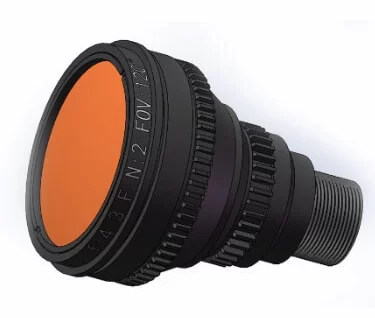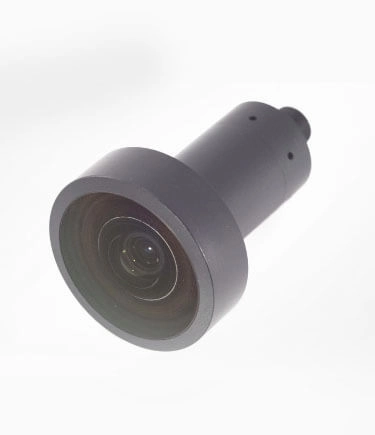Introduction
Wide-angle and fisheye lenses are popular tools for photographers seeking a broad field of vision. Both lenses offer unique features and applications. This article will explore the distinctions between these lenses and delve into their practical uses.
Wide-Angle Lenses
Wide-angle lenses, also known as short lenses, typically have focal lengths between 24mm and 35mm. They offer a larger angle of view compared to standard lenses, making them ideal for capturing expansive scenes with sharp foreground and background details. While some distortion may occur, it enhances the sense of depth and distance between objects in the frame.

Wide-Angle Lens
Key Features of Wide-Angle Lenses:
- Straight Lines: Wide-angle lenses maintain straight lines, providing panoramic views with minimal distortion.
- Deep Depth of Field: These lenses emphasize the relationship between foreground and background objects, making nearby subjects appear large and clear while distant objects appear smaller and slightly blurred.
- Reduced Chromatic Aberration: Wide-angle lenses experience minimal color distortion, resulting in clear, accurate images.
When to Use Wide-Angle Lenses:
Wide-angle lenses find applications in various scenarios, including:
- Low-light conditions: They reduce camera shake, performing well in dimly lit environments.
- Surveillance: Wide-angle lenses are excellent for capturing extensive areas with clear, detailed images, making them ideal for security purposes.
- Large Crowds: Events with numerous attendees can be captured in a single frame without significant distortion.
- Landscape Photography: Wide-angle lenses excel in capturing vast landscapes and architectural structures.
- Smartphones: Many smartphones incorporate wide-angle lenses in their rear-facing cameras to capture more in the frame.
For additional information about wide-angle lenses, please click here.
Fisheye Lenses
Fisheye lenses belong to the category of ultra-wide-angle lenses. They typically have focal lengths ranging from 6mm to 16mm, offering an expansive field of view, sometimes reaching up to 230 degrees. Fisheye lenses create barrel distortion, resulting in curved edges that mimic the perspective of a fish’s eye. There are two types of fisheye lenses: full-frame and circular.

Fisheye Lens
Types of Fisheye Lenses:
- Full-Frame Fisheye Lens: This lens produces images that fill the rectangular frame, bending lines from the center to the edges, emphasizing the fisheye distortion effect.
- Circular Fisheye Lens: Circular fisheye lenses produce a circular image enclosed by a black square or slightly rectangular frame.
Key Features of Fisheye Lenses:
- Closer Focus: Fisheye lenses are ideal for capturing subjects up close, with a sharp and colorful foreground, and slightly curved sides.
- Compact and Lightweight: Fisheye lenses are smaller and lighter, making them portable and suitable for hidden cameras, body cams, and surveillance systems.
- Deep Depth of Field: Ultra-wide-angle lenses, combined with a small aperture, deliver sharp, clear images from the foreground to the background.
- Barrel Distortion: Fisheye lenses intentionally create optical distortion, with curved lines at the frame’s edges, enhancing the dramatic effect.
When to Use Fisheye Lenses:
Fisheye lenses serve several practical purposes, including:
- Door Viewers: They provide a broader field of vision through small peepholes, allowing safe inspection of the surroundings outside.
- Surveillance Cameras: Fisheye lenses offer a wide view, reducing the number of cameras required to monitor large areas.
- Sporting Activities: These lenses capture dynamic, first-person views of extreme sports and activities.
- Large Crowds: Fisheye lenses provide wrap-around views, making the viewer feel surrounded by a crowd.
- Underwater Photography: Fisheye lenses are suitable for capturing the curves and fluidity of underwater environments.
- Creative Shots: Fisheye lenses add a dramatic and dynamic quality to subjects, making ordinary scenes more interesting.
If you are interested in a fisheye lens case study, please click here. For additional information about fisheye lenses, please click here.
Wide-angle lenses are well-suited for capturing expansive scenes with minimal distortion, providing true-to-life images. In contrast, fisheye lenses offer a dramatic, ultra-wide perspective with significant distortion, focusing attention on the foreground object. Both lens types have short focal lengths, making them valuable tools in various applications, from smartphones to surveillance systems, and even door viewers for enhanced safety.
Do not hesitate to contact Shanghai Optics today. We’d be more than happy to discuss your projects and how best they can become a success

